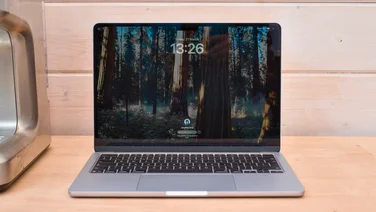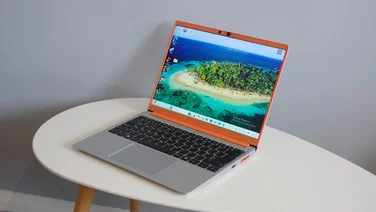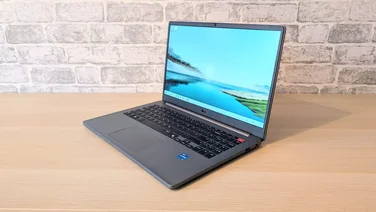To help us provide you with free impartial advice, we may earn a commission if you buy through links on our site. Learn more




When we last reviewed the Dell XPS 13 Ultrabook, we were impressed with its exceptional build quality, long battery life and its speedy processing power, so we were keen to see the new “Developer’s Edition” of Dell’s flagship ultraportable laptop. The XPS 13 Developer’s Edition runs Linux, specifically the Ubuntu 12.04 LTS distribution, instead of Windows 8. This won’t appeal to everyone, of course, but Linux fans will find a lot to like here.

The XPS 13’s maximum 1,920×1,080 resolution looks stunning on its 13.3in display and its glossy finish helps give primary colours real punch and vibrancy. This naturally makes the screen more reflective, which can cause a few problems if you’re working with overhead lighting, but considering it can produce such deep blacks and true whites, we had few complaints. We were also impressed with its wide viewing angles, and we could view the screen with little to no shift in contrast from almost any angle.
SLIM-LINE POWER
Its lightweight, 1.4Kg carbon-fibre chassis looks great, too. Dell’s kept the same smooth curves and metallic lid of the previous model and it measures just 18mm at its thickest point. It’s an ideal size for slipping into your bag, but we were a little disappointed that its battery life didn’t stretch to the impressive seven and a half hours we saw on the last XPS 13 we tested. Instead, we managed five hours and 45 minutes in our light-use tests with the screen set to half-brightness, but this is still a pretty good result.

The top priority for any developer, however, isn’t how great the screen is or how nice it looks, it’s the keyboard, and this proved much more problematic during our tests. The keyboard now has an extra key and although we liked the previous version, the current model’s Chiclet-style keys feel too close together. This makes it particularly ill-suited to typing commands quickly and error-free. We’d prefer more key travel, too.
NO TUX?
We were equally disappointed to see that the keyboard on the Developer’s Edition’s seems to be no different from that of the Windows 8 version of the XPS 13, as it has a Windows key. We don’t mind the key itself, but we think it should be emblazoned with a Tux icon rather than a Windows icon. Disappointingly, some of the Linux shortcuts we’d expect to use straight away by default were also mapped rather unhelpfully to different keys. An example is using Super- Tab (Windows-Tab) to access the Dash, which is Ubuntu’s version of Windows’ Start menu, instead of just hitting Super. Thankfully, Ubuntu lets you customise certain commands, but it made using the system much more fussy than we’d have liked from the start.

The all-in-one touchpad was very smooth and responsive, but on the whole we found clicking individual files and folders quite frustrating. In this case, we’d have preferred to have two separate buttons. Likewise, we noticed small pieces of its soft-touch material rubbing away underneath our fingers if we used it for long periods of time, which raised concerns over its build quality and longevity.
Its raw processing power was more promising. Unusually for Dell, the Developer’s Edition of the XPS 13 only has one specification, but it comes with Intel’s latest 2GHz Core i7-3537U processor, 8GB of RAM and a 256GB SSD. It scored a speedy 56 overall in our multimedia benchmarks, which puts it an average of seven points ahead of the previous wave of Ultrabooks when it comes to performance. We were a little disappointed to see that its multitasking ability was still roughly the same as older Core i7-3517U-based Ultrabooks we’ve tested, but it scored slightly higher in our image editing benchmark.
LINUX GAMING
More surprising is its ability to run games at a reasonable frame rate despite using its CPU’s built-in Intel HD Graphics 4000 graphics processor. We couldn’t run our normal Dirt Showdown benchmark because it won’t run on Ubuntu, but the XPS 13 managed a steady average frame rate of 45fps in Team Fortress 2 on High quality settings at resolution of 1,920×720. This dropped down to 20fps when we increased the resolution to its native 1,920×1,080, but it’s certainly capable of playing Linux-compatible 3D games as long as you don’t mind a slight compromise on graphical fidelity.
One thing that hasn’t changed is its lack of connectivity ports. This is partly due to the laptop’s incredibly slim dimensions but, much like previous models of the XPS 13, all you get is two USB ports, both of which are now the faster USB3 version, a combined 3.5mm headphone and microphone jack, and a mini-DisplayPort output.

The XPS 13 Developer’s Edition is certainly a very niche laptop, but its keyboard isn’t good enough for its target audience. It may be one of the cheaper high-end Ultrabooks we’ve tested (a Windows 8 XPS 13 with the same specification, for instance, will set you back another £120), but we feel developers will get frustrated with it very quickly. Instead, we think it’s far more suited to onsite technical staff who need a portable Linux system to take to clients’ premises but don’t have to type out reams of code.
For everyone else, we’d recommend looking at the Windows 8-based Dell XPS 12 instead. It’s a little more expensive, but the extra money will buy you a much better keyboard and a Full HD touchscreen.






